Did you know: More than 60% of customers say they would choose a business that resolves their issue quickly through automation over waiting to speak with a human agent? That’s just one sign of how natural language processing in call centers is reshaping the future of customer experience. From reducing wait times to helping contact center agents understand and respond more effectively to customer queries , artificial intelligence and language processing are the secret weapons behind leading customer service teams.
Today’s guide breaks down how natural language processing (NLP) in call centers works, the benefits it delivers, and how you can harness its power to transform your contact center for better customer satisfaction and efficiency.
Revealing the Impact: How Natural Language Processing in Call Centers is Revolutionizing Customer Service
The rise of natural language processing in call centers is nothing short of revolutionary. By enabling advanced AI systems to understand human language—even across phone calls, live chat, and email—contact centers can now offer more seamless, personalized, and lightning-fast customer service. Imagine calling a customer support line and having your problem understood instantly by a voice assistant that offers real solutions, or chatting with a virtual agent that interprets both your words and your emotional tone.
The impact of this technology isn’t just theoretical. Leading call centers report drastic reductions in handle times, measurable improvements in customer satisfaction, and a significant decrease in customer churn. Behind these results is NLP’s ability to understand and respond to spoken and written language at scale, transforming previously manual processes into automated, AI-driven conversations.
This section reveals how modern contact centers leverage language processing, machine learning, and conversational AI to set new standards for customer experience , delivering the right answers to complex queries faster than ever before.
What This Guide Covers on Natural Language Processing in Call Centers
- Understand the fundamentals of natural language processing (NLP) in call centers
- Explore real-world applications that enhance customer service and customer experience
- Discover how sentiment analysis and conversational AI are elevating call center interactions
- Gain insights from industry leaders and practical use cases
- Find actionable strategies for integrating NLP into your customer support strategy
Defining Natural Language Processing in Call Centers: Context and Core Concepts
Explaining Natural Language and Language Processing in the Contact Center Ecosystem

At its core, natural language processing in call centers refers to the use of advanced AI algorithms that enable computers to interpret and intelligently respond to human language—both spoken and written. In a bustling contact center , this means leveraging technologies that can transcribe calls in real time, extract meaning from detailed customer queries , and even detect the emotional state of a caller using sentiment analysis .
Unlike conventional automation, NLP-powered systems do more than follow scripts. They “listen” and “read” just like a human agent but process huge volumes of data instantly—identifying intent, context, and sentiment in live phone calls and online chats. This helps reduce wait times and allows agents to focus on resolving complex issues rather than repetitive inquiries.
The emergence of natural language processing has brought virtual assistants , voice assistants, and smart chatbots into the everyday workflow of call centers . These tools don’t just automate responses—they transform how customer service is delivered across all communication channels, including voice response systems, chat, SMS, and even social media.
Historical Timeline: The Evolution of Natural Language Processing in Call Centers
| Year | Milestone | Impact on Call Centers |
|---|---|---|
| 1980s | Introduction of Interactive Voice Response (IVR) | First automated customer service phone systems, basic speech recognition |
| 2000s | Adoption of Speech-to-Text and IVR Enhancements | Improved automation, beginning of language processing in customer queries |
| 2010s | Rise of Chatbots, Virtual Agents, and Sentiment Analysis | Omnichannel support, deeper integration of NLP and AI in contact centers |
| 2020s | Conversational AI & Advanced NLP | Real-time analysis, predictive support, hyper-personalized experiences across all channels |
Key Benefits of Natural Language Processing in Call Centers for Customer Service and Customer Experience
Boosting Customer Satisfaction Through Intelligent Interactions

The primary benefit of natural language processing in call centers is a dramatic rise in customer satisfaction . With systems that can understand, interpret, and respond to complex requests, customers get faster, more accurate answers. Whether it’s automated voice response systems or live chat support, NLP ensures that callers aren’t stuck repeating themselves or getting misplaced by rigid phone trees.
NLP tools can also provide personalized solutions by recognizing returning customers and adapting conversations to previous interactions. This leads to a deeper sense of being heard and valued—a cornerstone of great customer service today.
Perhaps most importantly, sentiment analysis engines monitor not just what’s being said, but how it’s said, enabling real-time adjustments and interventions to prevent negative experiences from escalating. It’s a win-win for both customers and contact center teams.
Driving Operational Efficiency in Contact Centers with AI and Automation
Operational efficiency is another massive advantage of using natural language processing in call centers . AI-driven language processing means repetitive, low-value tasks—such as call routing, FAQs, and form-filling—can be handled instantly by chatbots and virtual agents. This frees human agents to focus on complex situations where empathy and judgment are required.
The result: measurable reductions in customer wait times , improved agent productivity, and lower operational costs for the call center . Automated workflows bolstered by NLP also ensure higher accuracy, less rework, and better consistency in responses—keys to maintaining top-tier customer support at scale.
Additionally, the data generated and analyzed by NLP systems fuels powerful analytics, allowing managers to pinpoint service bottlenecks, optimize staffing, and continuously refine response scripts for best results.
Unlocking Proactive Customer Support: Reducing Churn and Improving Retention
Proactive support is the new competitive advantage. By analyzing previous customer interactions and leveraging predictive analytics, natural language processing in call centers can identify potential issues before they become problems. For example, AI can detect frustration in a customer’s tone and escalate the issue to a senior agent or offer a tailored retention incentive.
Contact centers are moving away from “firefighting” toward personalized, data-driven engagement—reducing churn and nurturing long-term loyalty. The ability to act on real-time sentiment analysis, browsing history, and past support tickets equips your team to deliver what the customer needs, often before they even ask.
"More than 60% of customers prefer automated solutions if they resolve issues faster." - Industry Study
How Natural Language Processing Works in Call Centers: Processes and Technology
The Role of Conversational AI, Sentiment Analysis, and Voice Assistants

Key technologies driving natural language processing in call centers include conversational AI , sentiment analysis , and voice assistants . Conversational AI powers smart chatbots and virtual agents that not only follow logic, but dynamically adjust to customer’s language, intent, and emotional signals in real-time phone calls or chats.
Sentiment analysis engines scan both spoken language and written text to detect mood, urgency, or dissatisfaction, enabling agents (or automation) to react accordingly. AI-powered voice assistants can transcribe and translate conversations as they happen, turning every customer touchpoint into actionable data that enhances service delivery and improves customer satisfaction .
Combined, these technologies mean customers get both accuracy and empathy , with faster issue resolution compared to traditional call center setups.
From Phone Calls to Omnichannel: NLP Across Multiple Communication Channels

Modern contact centers aren’t just about phone calls—they’re omnichannel. Customers expect support via chat, email, SMS, and social platforms. Natural language processing in call centers enables seamless experiences across all touchpoints.
NLP algorithms handle spoken language in phone calls as easily as they analyze written exchanges in chat or social media. This ensures that service is consistent, regardless of how (or where) the customer connects. Customer data is unified across platforms, allowing agents to access history, preferences, and sentiment, making every interaction more personalized.
Omnichannel NLP also empowers AI-driven self-service, so customers can resolve issues at their own pace, 24/7—without relying on live agents for every query.
The Technical Side: Core Components of Language Processing for Customer Support
| NLP Platform | Key Features | Accuracy | Scalability |
|---|---|---|---|
| Google Dialogflow | Conversational AI, intent detection, multi-language support | High | Enterprise-ready |
| Microsoft Azure Cognitive Services | Speech-to-text, sentiment analysis, integration with other Azure tools | Very High | Enterprise-ready |
| Amazon Lex | Chatbots, speech recognition, natural language understanding | High | Highly scalable |
| IBM Watson Assistant | Contextual AI, advanced analytics, strong compliance | Very High | Scalable for large enterprises |
Top Use Cases and Real-World Applications of Natural Language Processing in Call Centers
Automated Customer Service with Voice Assistants and Virtual Agents

Automated customer service is one of the most visible uses of natural language processing in call centers . Virtual agents and voice assistants answer routine questions, schedule appointments, and process transactions—all while adapting to natural, conversational speech.
Unlike older IVR systems, today’s NLP-powered agents can understand nuanced inquiries and even switch between languages. This reduces dependence on human agents for repetitive calls and keeps live support teams focused on complex cases.
In addition to improving customer satisfaction, these tools decrease operational costs, offer 24/7 accessibility, and ensure consistency in all customer interactions .
Sentiment Analysis for Enhanced Customer Insights in Contact Centers
Sentiment analysis is a key innovation in the realm of natural language processing in contact centers . By monitoring how customers actually feel during interactions—whether they’re frustrated, happy, or uncertain—contact centers can actively tailor their support approach.
For example, if a customer’s tone becomes negative during a phone call, an alert can notify a supervisor or prompt the agent to offer compensation or escalate the case. Over time, sentiment data helps pinpoint service gaps, improve coaching programs, and develop products or processes better aligned to customer needs.
This constant feedback loop transforms raw communication data into actionable insights that power continuous improvement in customer experience .
Quality Assurance and Compliance Monitoring Through Natural Language
QA and compliance monitoring have traditionally required manual listening or reviews—a labor-intensive process in any call center . Now, with natural language processing , every recorded call or written message can be automatically scanned for pre-set keywords, phrases, sentiment shifts, or regulatory warnings.
This reduces risk, ensures compliance with industry standards, and allows supervisors to focus on coaching rather than policing. Real-time NLP-powered scoring can trigger coaching or escalation for at-risk interactions, helping organizations maintain consistent standards across their customer service operation.
Additionally, recorded voice and chat logs offer traceability and confidence in meeting increasingly complex data security and privacy regulations.
Personalizing Customer Experience: Tailored Recommendations and Solutions

Personalization is no longer a “nice-to-have” in today’s customer support —it’s expected. Natural language processing in call centers enables virtual agents and human agents alike to access a full customer history, detect patterns, and offer relevant solutions or product recommendations in real time.
For instance, a returning customer calling about an issue can be greeted by name, quickly reminded of their purchase history, and offered solutions tailored to their preferences. AI can also proactively suggest upsells or alert agents to possible retention strategies.
This kind of personalized attention not only delights customers but can significantly boost loyalty, average order value, and long-term revenue.
Challenges and Limitations of Deploying Natural Language Processing in Call Centers
Handling Complex Phone Call Scenarios and Language Nuances

The promise of natural language processing in call centers is tremendous, but challenges remain. Language is inherently complex—regional slang, emotional nuance, or technical jargon can flummox even advanced AI. In high-stakes situations, human agents often outperform their virtual counterparts in compassion, judgment, and creativity.
Highly emotional calls, such as complaints or crisis situations, sometimes require the empathy and reassurance only a real person can provide. As such, most successful call centers deploy NLP as an assistant to, not a replacement for, skilled human agents.
Regular updates, fine-tuning, and customizations are necessary to keep AI engines relevant in diverse and evolving customer communication contexts.
Data Privacy, Security, and Compliance Concerns in Contact Centers
Security and data privacy are non-negotiable in the world of call center operations. Natural language processing in contact centers means handling large volumes of sensitive information—personal data, payment details, and account numbers—via phone calls, chat, and email.
Protecting these records from unauthorized access, ensuring data retention compliance (like GDPR or HIPAA), and training AI models without exposing or leaking private data are active concerns as adoption grows. It’s critical to partner with technology providers who prioritize robust encryption, access controls, and transparent data handling practices.
Ongoing audits and ethical oversight are essential, as even unintended data usage can have severe reputational and legal consequences for call centers.
Ensuring Accuracy and Reducing Bias in NLP Algorithms
Machine learning models are only as good as the data they’re trained on. In natural language processing in call centers , inaccuracies or “bias” in training data can lead to misinterpretations, alienating certain customers or providing incomplete information.
Continuous data training, active bias mitigation, and regular monitoring are crucial to keeping NLP systems sharp and fair. This means collecting diverse datasets, retraining algorithms periodically, and blending human oversight with automated quality checks.
"The success of NLP in customer service depends on continuous data training and monitoring." - CX Expert
Best Practices for Implementing Natural Language Processing in Call Centers
Strategy: Selecting the Right NLP Tools for Your Contact Center
The first step in deploying natural language processing in call centers is choosing technology that aligns with your business goals, volume, and compliance needs. Consider vendor features, integration capabilities, AI sophistication, and real-world track record in industries similar to yours.
Look for platforms that support your required channels (voice, chat, social) and offer robust analytics. Don’t ignore the value of strong customer support and customization—your processes are unique, and so should your solution.
Leverage free trials and consult references to ensure a smooth match and scalable roadmap for future growth.
Training, Adoption, and Change Management for Customer Support Teams
No matter how advanced your natural language processing in call centers deployment, success depends on human buy-in. Prepare your agents with training on new workflows, regular coaching, and hands-on support to demystify AI’s role.
Involve frontline staff early—solicit feedback, incorporate concerns, and celebrate wins. By treating NLP and AI as tools to boost—not replace—human skills, you’re more likely to foster adoption and unlock the full productivity potential of your contact center.
Support teams should be empowered, not threatened, by AI-driven innovation.
Continuous Optimization: Leveraging Analytics and Customer Feedback
- Assess Needs : Evaluate customer pain points and internal inefficiencies.
- Select Vendors : Choose NLP platforms that fit your workflows and channels.
- Pilot & Integrate : Run small pilots, gather data, and ensure integration with existing center software .
- Train Teams : Offer robust agent training and build AI understanding.
- Monitor Results : Track KPIs—wait times, first-call resolution, CSAT scores.
- Iterate : Use analytics and customer feedback for ongoing process refinement.
Future Trends: The Next Frontier for Natural Language Processing in Call Centers
The Growing Intelligence of Conversational AI and Voice Assistants
As AI continues to advance, conversational AI and voice assistants will become even more intuitive. We can expect NLP systems to handle increasingly complex customer queries and phone calls, recognize emotion and intent with near-human accuracy, and offer more natural, context-aware dialogue.
This will blur the line between human and machine customer service, with a seamless transfer from automated systems to live agents only when necessary.
Future NLP will also support multiple languages and cultural nuances, ensuring consistency in customer experience for global contact centers.
Omnichannel Integration: Seamless NLP-Driven Customer Experiences

True excellence in customer service goes beyond any single channel. The near future will see total integration of natural language processing in call centers across phone, chat, email, social media, and new platforms yet to emerge.
With all channels linked through a unified AI engine, customers will be able to start a conversation in chat, switch seamlessly to a phone call, and receive a follow-up via SMS—all with the context and sentiment from their journey intact.
This will not only drive operational efficiency but redefine what it means to deliver truly personalized, connected, and always-on customer support.
Predictive Customer Service: From Reactive to Proactive with NLP
The next wave of innovation for natural language processing in call centers is predictive customer service. With advanced analytics and machine learning, businesses can anticipate customer needs—offering solutions before issues arise and even preventing churn altogether.
Proactive outreach, automated follow-ups, and preemptive resolution of common issues will boost overall customer satisfaction and position companies as true industry leaders.
Predictive service, powered by NLP, means moving from reacting to customer problems to delivering preventive, delighted experiences.
Video: Visualizing Natural Language Processing in Call Centers
Demonstration Video: Real-Time Sentiment Analysis on a Live Phone Call
Witness how NLP technology analyzes a live phone call , detecting customer sentiment in real time and prompting tailored agent responses for immediate conflict resolution and improved customer experience .
See firsthand how NLP integration can surface actionable insights and empower both virtual assistants and live agents to address even the most challenging customer support scenarios.
Explainer Video: How NLP Transforms Customer Experience in Call Centers
This video walks you through the journey of a customer interacting with a modern call center powered by natural language processing . Discover how AI-driven tools streamline communication, personalize recommendations, and elevate overall satisfaction.
You'll gain a visual understanding of the behind-the-scenes technologies—from automatic transcription and sentiment analysis to virtual agent handoff—showcasing the future of customer support.
People Also Ask
What is natural language processing in customer service?
Natural language processing in customer service enables call centers to interpret and understand customer speech or written messages, which allows for faster, more accurate, and automated responses, improving customer satisfaction and streamlining support operations.
What are examples of natural language processing?
Examples include automated chatbots, voice assistants, sentiment analysis tools, transcription services, and real-time call analytics—all commonly used in call centers and contact centers to boost customer experience.
What is NLP contact center?
An NLP contact center leverages natural language processing to interpret and respond to customer inquiries automatically, provide personalized customer experiences, and optimize support workflows through advanced automation and analytics.
How is AI being used in call centers?
AI technologies like natural language processing, machine learning, and automation power chatbots, voice assistants, sentiment analysis, and workflow optimization, making call centers more efficient and improving the overall customer experience.
Frequently Asked Questions on Natural Language Processing in Call Centers
How does sentiment analysis impact customer satisfaction in call centers?
Sentiment analysis monitors the emotion behind customer communications in real time. By detecting frustration or dissatisfaction early in a conversation, contact centers can proactively de-escalate issues, deliver more empathetic service, and resolve complaints before they damage loyalty, leading to greater customer satisfaction.
Can natural language processing improve agent training and performance?
Absolutely. NLP systems offer insights into successful customer interactions, highlight common service pitfalls, and automatically flag areas for coaching. By reviewing real transcripts and sentiment analytics, managers can deliver targeted training, improving agent skills and overall contact center effectiveness.
What industries gain the most from NLP contact center deployments?
Industries with high customer interaction volumes—such as retail, finance, telecom, and healthcare—see the greatest gains from NLP. These sectors benefit from improved accuracy, lower wait times, reduced costs, and better compliance, all of which enhance customer loyalty and operational excellence.
Is it possible to blend NLP with existing AI and RPA tools in call centers?
Yes. Leading NLP platforms are designed to integrate seamlessly with other artificial intelligence and robotic process automation (RPA) solutions. This hybrid approach enables contact centers to automate routine tasks, generate human-like responses, and deliver a uniform customer experience across channels.
Unlock Better Customer Experiences: Harnessing Natural Language Processing in Modern Call Centers
Ready to future-proof your customer service? Explore the latest advances in natural language processing in call centers to deliver world-class experiences, boost efficiency, and empower your support teams for the AI-driven future.
Adopt NLP solutions step by step—start with clear goals, pick scalable tools, empower staff, measure performance, and always keep improving for top-tier customer satisfaction.
To further explore the transformative role of Natural Language Processing (NLP) in call centers, consider the following resources:
-
“Impact of Natural Language Processing in Call Centers” : This article delves into how NLP enhances customer engagement by enabling real-time analysis of interactions, allowing agents to provide personalized responses that cater to individual needs. ( globalsky.com )
-
“The Essential Guide to NLP in the Call Center: Driving Radical Efficiency and Experience Gains” : This guide explores various NLP applications, including intelligent call routing and real-time sentiment analysis, showcasing how these technologies can significantly improve operational efficiency and customer satisfaction. ( 33rdsquare.com )
If you’re serious about leveraging NLP to revolutionize your call center operations, these resources will provide you with valuable insights and practical strategies.
 Add Row
Add Row  Add
Add 




Write A Comment